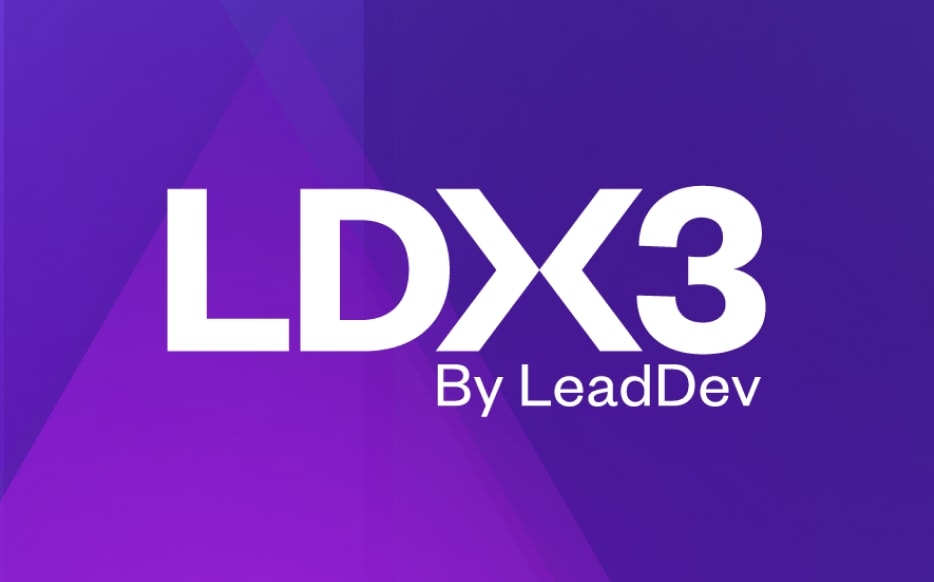You have 1 article left to read this month before you need to register a free LeadDev.com account.
Estimated reading time: 6 minutes
Your inbox, upgraded.
Receive weekly engineering insights to level up your leadership approach.
There has been an explosion of generative AI programming tools hitting the market over the past two years, many of which are free to use.
ChatGPT and other generative artificial intelligence (AI) tools have shown that they can fit into software developers’ workflows and provide an instant productivity boost.
These apps – which leverage large language models (LLMs) and other kinds of AI models to understand language, imagery, and code – can answer questions, reorganize information, and provide writing or code snippets. Of course, these tools aren’t perfect yet, and still require a lot of supervision to get the most from them, but it’s hard to deny that they can be useful when deployed under the right circumstances.
As with any tech boom, there are suddenly dozens of different programming tools vying for engineers’ attention. Here are a few you should know about.
ChatGPT
OpenAI’s ChatGPT is the free app that made the world aware of what generative AI could do. While the chatbot might not be the best app for programming tasks specifically, it is still able to generate boilerplate code, translate or refactor lines of code into different languages, automate rote tasks, and even help with more complex coding problems.

London • June 2 & 3, 2026
Rands, Nicole Forsgren & Matej Pfajfar confirmed
While you don’t have to pay, install anything, or give it access to your codebase to see if the suggestions are good, or if it can explain what complex functions do, ChatGPT Plus at $20 per month gives you more access to OpenAI’s most powerful models. This makes ChatGPT a good starting point when it comes to exploring what a generative AI tool can do and it can provide good solutions to some problems, but there are better coding-focused tools out there.
OpenAI Codex
In 2025, OpenAI also launched Codex, a cloud-based agent that can work directly with the code in a GitHub repository. It uses a fine-tuned version of OpenAI’s o3 reasoning model. You’re able to both ask it for information about your codebase and direct it to make changes, like fixing bugs and adding new features.
Codex runs everything in a sandbox without internet access, so it can test any code it creates in a safe environment before submitting a pull request. Right now, it’s only available to ChatGPT Pro ($200/month) subscribers and Enterprise subscribers, but it’s rolling out to ChatGPT Plus ($20/month) subscribers soon.
Google Gemini
Gemini is Google’s response to ChatGPT. Google developed the transformer architecture that has underpinned the recent boom in LLMs, so it has a huge amount of AI expertise, but it has been slow to leverage that into consumer products.
As a coding assistant, Gemini can code in more than 20 programming languages, including Python, Java, C++, and Javascript. It can generate code from your prompts and comments, explain code you paste in, and help you refactor any code you’ve already written.
While Gemini is also free at the moment, it’s also available as part of Google Workspaces plans which integrate it with other Google apps like Gmail and Google Docs.
GitHub Copilot
GitHub Copilot is meant to be an AI pair programmer. Unlike ChatGPT and Google Gemini, it’s explicitly designed to be capable of writing functional code in languages like Python, Javascript, Go, PHP, Ruby, and Swift.
Because Copilot has full access to your project, it is able to generate specific code suggestions based on architecture, style conventions, and context. If you ask it to create a function it won’t just give you boilerplate code – it will do it using the variables, classes, and methods you’ve already defined. You can also select what model from OpenAI, Google, or Anthropic you want it to use to generate your code suggestions.
Right now, Copilot integrates with a small number of popular integrated development environments (IDEs), including Neovim, Visual Studio, and Xcode.
Amazon Q Developer
Amazon Q Developer (formerly CodeWhisperer) is Amazon’s answer to GitHub Copilot. It was trained on billions of lines of publicly available code, as well as Amazon code. It similarly works with multiple programming languages like Python and Java, integrates with your IDE, and suggests complete functions based on your prompts, comments, and project code.
The key difference is that Amazon Q is optimized for AWS APIs, including the popular EC2, Lambda, and S3 infrastructure types. If you’re trying to build on top of Amazon’s cloud platforms, it can suggest code using the relevant services that meet AWS best practices. While it can also suggest non-AWS code, it’s less likely to get things perfect.
Cursor
While Copilot and Q Developer are add-ons available in multiple IDEs, Cursor is an AI-first IDE itself. Instead of AI being a useful if optional extra, with Cursor it’s a core part of the coding experience.
Features like Composer allow the AI to work on multiple files at once in an autonomous, agent-like manner, and Cursor’s access to your whole code-base means it can make intelligent suggestions based on your existing functions.
Although it’s only been available since 2023, it’s already proving to be incredibly popular with engineers.
Zed
Like Cursor, Zed is a new IDE designed to enable collaboration between humans and AI. It’s open-source and you can use it for free with your own API keys for AI, or plans start at $20/month if you want support and enterprise features.
Tabnine
Tabnine is another AI coding assistant that supports a range of LLMs from OpenAI, Anthropic, Mistral, and Cohere to generate code suggestions. It can auto-complete whole lines of code or full functions, as well as match the style and conventions of your existing codebase.
Where Tabnine stands out is with its availability. GitHub Copilot and Amazon Q Developer are only available in a handful of major IDEs, like VS Code, whereas Tabnine is also available in a wider variety of apps, including Sublime, Eclipse, Neovim, and Android Studio.
CodeWP by WPAI
WordPress is the most popular content management system (CMS) in the world, powering more than 40% of the world’s websites. If you’re one of the developers who has built a career on top of WordPress or any of its popular plugins like WooCommerce, then CodeWP might be exactly what you’re looking for.
CodeWP has been designed and trained explicitly to generate PHP, Javascript, and jQuery that’s compatible with WordPress, its plugins, and its database. Like most AI coding assistants, it’s a relatively new app, so it might not have all the capabilities you’d expect, but it is under active development, with new features rolling out regularly.
What the Diff
What the Diff is designed to help teams review code and create better documentation.
What the Diff integrates with your GitHub and GitLab repositories. When someone on your team commits a pull request, it analyzes the difference between the new and old code – and automatically creates a natural language summary.
Instead of a pull request comment just saying “bug fixes”, there will be an accurate summary of what code has changed and what it’s done. It’s a great way to keep non-technical team members in the loop, and just make documentation neater for everyone.
As well as improving documentation, What the Diff can also directly refactor code based on a prompt or comment, and create weekly reports summarizing all the pull requests your team has made.
GPT-4o, FLUX.1, and Midjourney
It’s not just back-end developers who can get the benefits of the current generative AI boom. Text-to-image tools like GPT-4o image generation, FLUX.1, and Midjourney allow you to generate any image you want from a simple, written prompt to quickly generate app icons, interface elements, and placeholders for any front-end design elements.
If you don’t have the time – or the design chops – and need something workable right now, even just as a placeholder, they’re surprisingly effective.
Remember, stay cautious
As powerful as all these AI programming tools appear to be, there are still plenty of reasons to be cautious. Enough major enterprises are legitimately concerned about how GPT and other LLM-powered tools handle important data to have banned them from the workplace, and these apps are nowhere near reliable enough to be left to their own devices just yet.
They might be able to help engineers work faster – but they can’t do their job for them. Yet.




